Welcome to the PestPal™ Ento-ID educational resource. This practical reference is designed to support learning in pest identification, which enables recognition and assessment-based response to flying insect pests. Each species profile highlights key visual traits, behavior patterns, and pestiferous significance empowering you to make fast, accurate field decisions.
Order: Diptera
Family: Sarcophagidae
Taxonomic notes:
• Genus: Sarcophaga (a common Genus of FF)
• Key diagnostic traits:
• Bristles on the meron (small area near the fly’s leg base used for identification)
• Bristles or setae located on the fly’s thorax
• Subscutellum exposed (small area beneath the rear of the thorax)
• Striped thorax and checkerboard abdomen
Identification:
FFs are medium to large (10-14 mm), with red eyes, a dull gray body, and a distinct checkerboard pattern on the abdomen. FF is often mistaken for House fly but can be identified by three black thoracic stripes. Typical flight speed is up to 7 km/h (4.3 mph), with a slow, direct pattern. FF is larviparous (birth live maggots rather than placing eggs), which allows rapid colonization of decaying material.
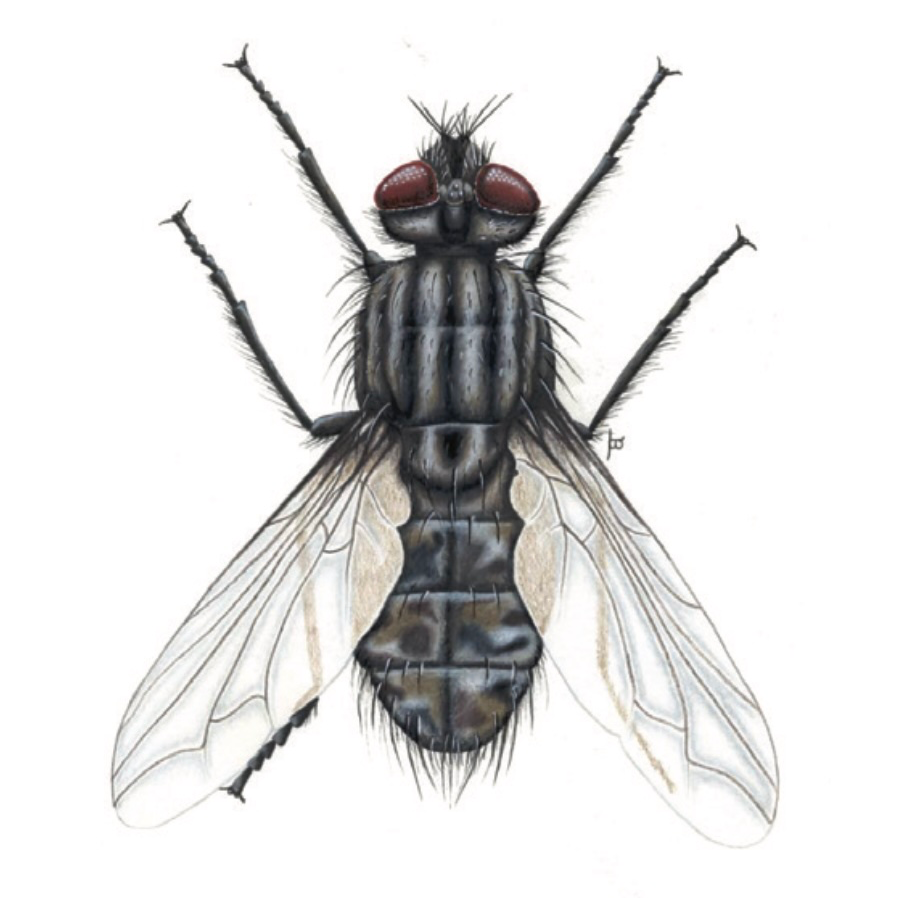
FFs are important in forensic and clinical entomology (study of insects in medicine and legal investigations or medicolegal). FF may cause facultative myiasis (accidental infestation of live tissue, especially wounds) and can vector pathogens like Salmonella, E. coli, and Clostridium spp. FF plays a role in estimating the postmortem interval (PMI-time since death) by appearing at remains in predictable developmental stages.
| Trait | Description |
|---|---|
| Size | 10-14 mm or 0.40 to 0.55 in |
| Color | Gray-black body with checkerboard abdomen |
| Flight | Slow, direct (up to 7 km/h or 4.3 mph) |
| Activity | Diurnal (day-active) |
| Season | Spring through fall, peak in heat |
| Reproduction | Births live larvae (larviparous) |
| Risk | Hygiene & medical relevance |
FF is a decomposer, helping recycle nutrients by breaking down decaying organic matter. FF is used as a bioindicator (species that signal ecosystem health) during ecological monitoring of decay stages.
In the postmortem interval (PMI) or time since death, FF is often the first in time of arrival (TOA) or order of succession of insects to colonize decomposing remains. Entomologists use meteorological data, FF presence, and life stage to help determine time of death (TOD) in forensic cases.
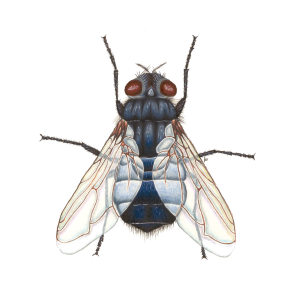
Features
Thorax and abdomen are black/blue in colour and often with a metallic appearance. Wingspan 18-20mm.
Control
All PestWest fly killers are a very effective step in controlling these pests.
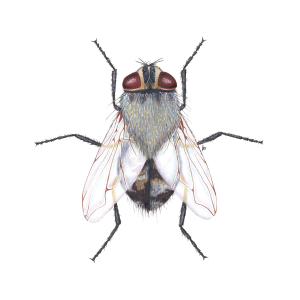
Features
Large flies, wingspan up to 20mm. Thorax distinctive dark grey/olive colour covered in golden hairs.
Control
Areas where flies congregate should be treated with residual insecticide. PestWest fly killers are a very effective step in controlling cluster flies.
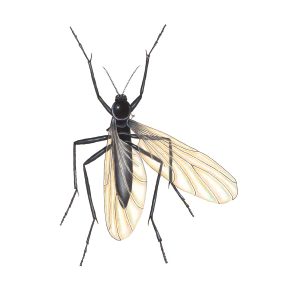
Features
Small insects, wingspan 14-15mm. Black head, thorax and abdomen. Thorax has humped appearance.
Control
Chameleon® sticky traps are a very effective step in controlling mushroom flies.
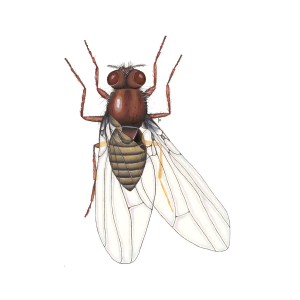
Features
Small yellowish brown with darkly striped abdomen. Prominent red eyes.
Control
Chameleon® sticky traps are extremely effective at controlling these smaller insects.
Tap the button below to dive into ‘A Fruitful Fly Discovery,’ an insightful article on Fruit Flies by our expert, Doc.
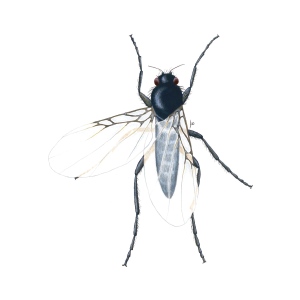
Features
Thorax dark brown/tan with distinctive humped appearance.
Control
Chameleon® sticky traps and electronic fly killers are extremely effective at attracting and controlling these pests.
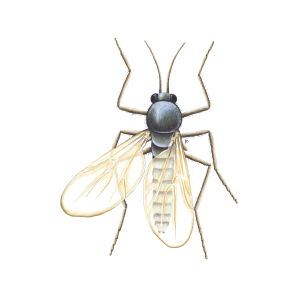
Features
Dark brown/black in colour. Wingspan 3-4mm. Will swarm in large numbers and inflict bites.
Control
Insect repellents should be used when outdoors to prevent bites. Chameleon® sticky traps will attract and control midges
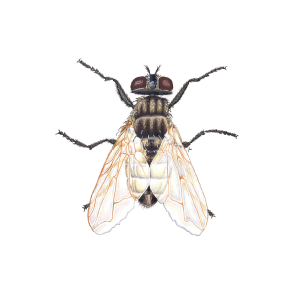
Features
Thorax grey with four longitudinal dark stripes. Sides of abdomen are yellowish and may be transparent. A dark band covers the final abdomen segments.
Control
PestWest fly killers and sticky traps will effectively control houseflies.
Tap the button below to dive into ‘House Flies: From Annoyance To Understanding,’ an insightful article on houseflies by our expert, Doc.

"*" indicates required fields


Mon - Fri : 8 AM - 5 PM | EST